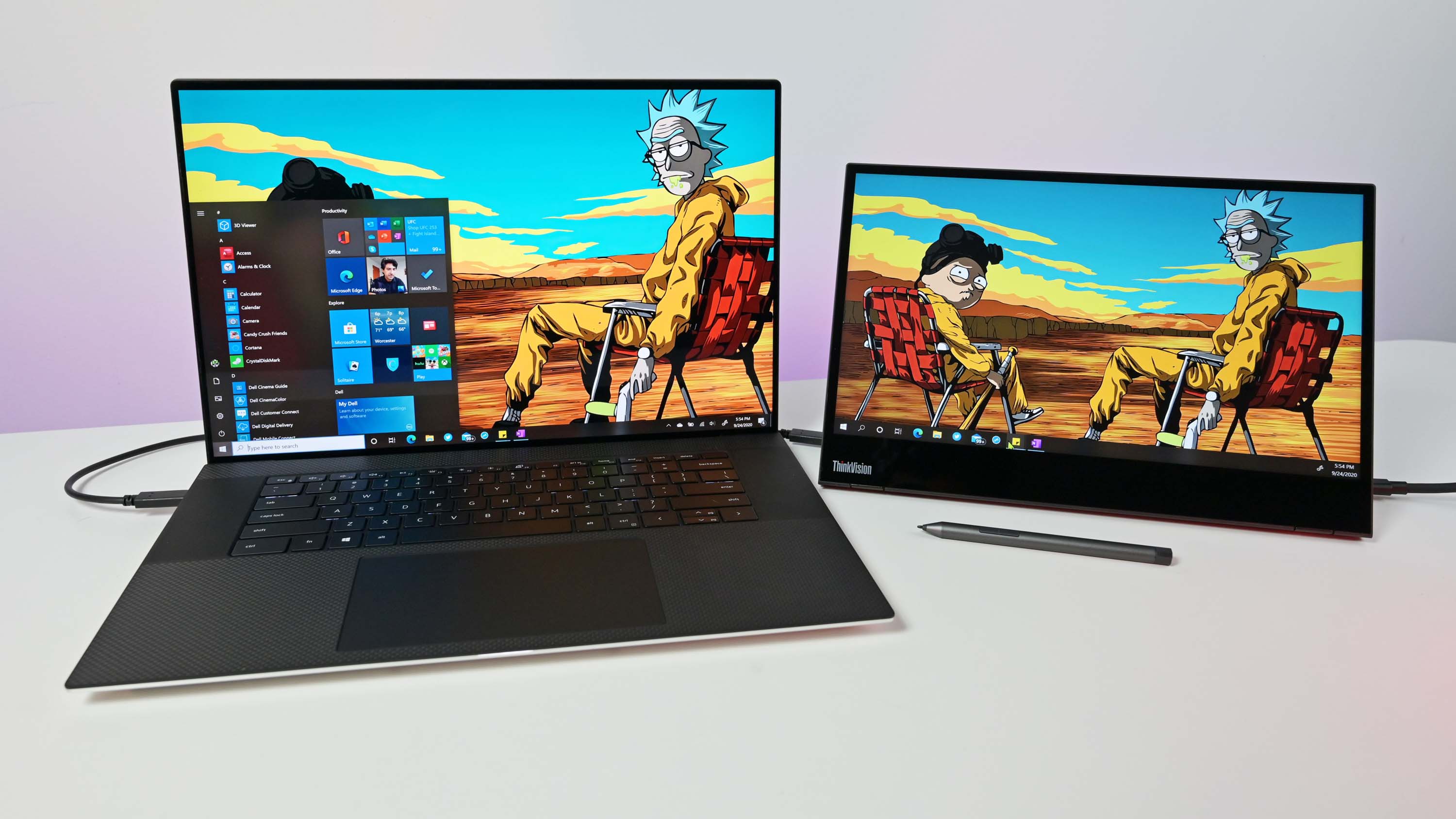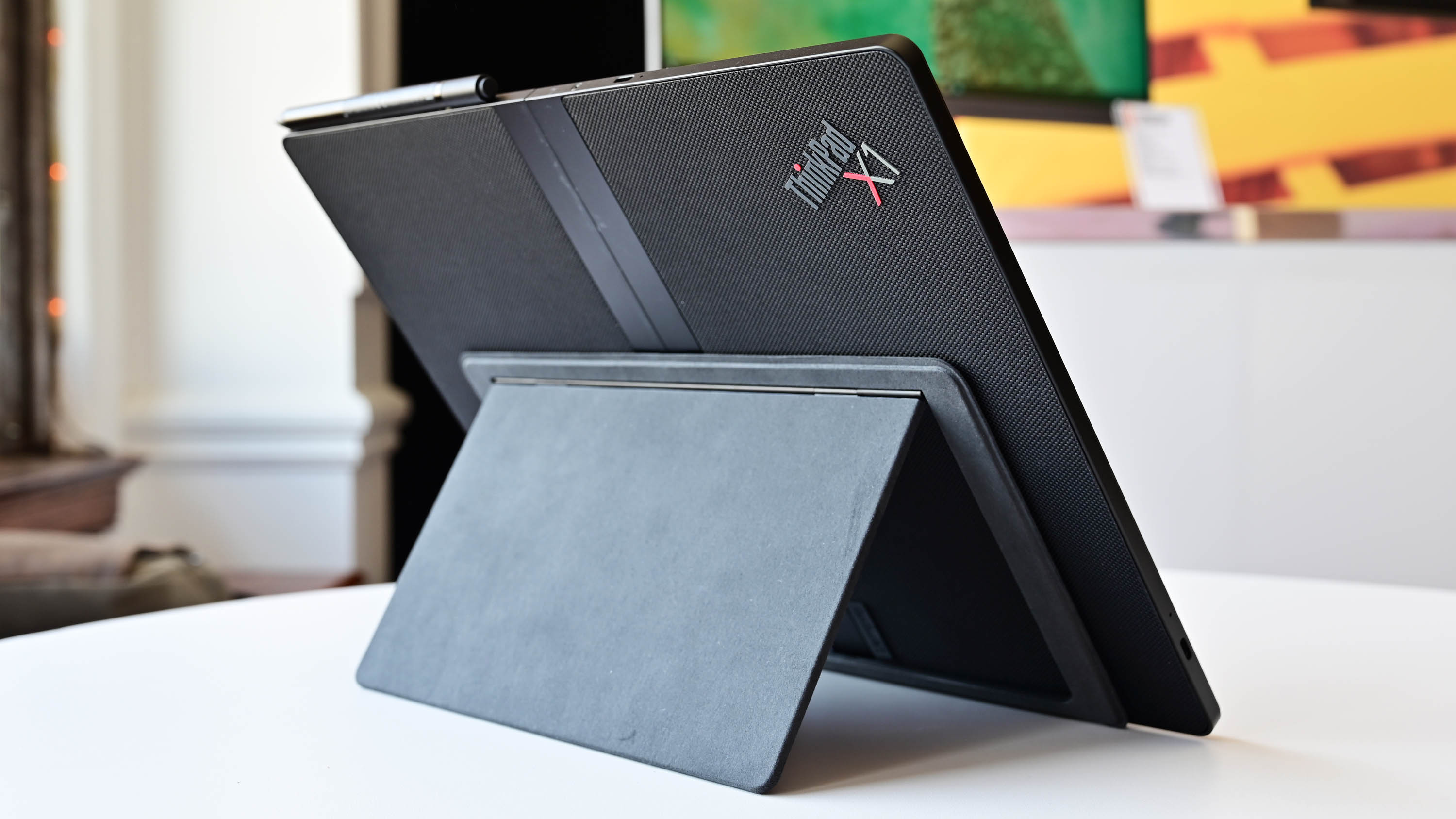Hey PC makers, it’d be nice to get a folding mobile monitor before a folding laptop
While laptops with folding displays will be fun, starting with the basics, like a portable folding display for work, would be nice.

So far in 2022, we’ve had two big brands announce laptops with a foldable display: ASUS ZenBook 17 Fold and Lenovo’s ThinkPad X1 Fold 16. They both look great, but Lenovo gets the nod for pushing the category further since it’s on its second-gen (as well as being a grand cheaper).
But as I’m here packing for a big international trip to cover Intel in Israel, I’m pondering taking a portable monitor with me like Lenovo’s excellent ThinkVision M14t, which supports touch and inking. (There's also the new ThinkVision M14d with 16:10 aspect).
I plan to use the ThinkVision M14t with the new HP Dragonfly G3 (which I'm reviewing). It's an impressive premium, super-light, business laptop with 5G but no touch screen.
See, portable displays are useful, relatively affordable add-ons for people who need to work remotely, travel, or want a separate screen to give a business presentation to a client without fiddling with their laptop. It’s an invaluable tool for many.
And in my case, I now get touch and inking support for a non-touch laptop in addition to the extra screen space for triaging work.

The problem with portable screens is that they are fragile. They’re just wide, thin slabs of glass, sometimes with a digitizer. I know this as I broke one. All I did was toss it in a suitcase with some clothes as “protection” and switch hotel rooms! This incident happened within five minutes, making me nervous for my next international trip (I only do carry-on and never check luggage).
The solution seems obvious: A foldable portable monitor where the outer shell protects the inner screen. It works for the Samsung Z Flip and Z Fold, so why not a big mobile screen?
Get the Windows Central Newsletter
All the latest news, reviews, and guides for Windows and Xbox diehards.
I question why Lenovo, HP, or any other company has made one. Here are four reasons why it makes sense to make a portable foldable display:
1. It’s technologically simpler as there is no “laptop” to it
2. It’s more affordable
3. It’s more pragmatic
4. It’ll probably sell a lot more
Let’s be clear, Lenovo already has a 16” foldable Samsung OLED display and is about to start mass production. Pricing starts at $2,499, and Lenovo is aware that this is a niche device now and unlikely to be a hot seller (despite early positive reactions).
Like, Lenovo, just remove all the "PC stuff," make it thinner, and sell that.
Portable monitors are a hot market. HP, Dell, and Lenovo all make them, and there are always fun Kickstarter campaigns to push things further, like 4K ones with higher refresh rates for gaming or Splay, not to mention the dozen no-name brands on Amazon.

With all due respect to Lenovo, putting out a $2,499 laptop with a foldable display before a simpler, more affordable, and likely more popular foldable portable monitor seems like putting the cart before the horse.
Of course, I think it is just a matter of time before we see PC makers start to make portable displays that fold. Lenovo already figured out how to do it and has pen support for its laptop, so the prospects look good.
I just wish I had one today, instead of waiting until … whenever … for one.

Daniel Rubino is the Editor-in-chief of Windows Central. He is also the head reviewer, podcast co-host, and analyst. He has been covering Microsoft since 2007 when this site was called WMExperts (and later Windows Phone Central). His interests include Windows, laptops, next-gen computing, and wearable tech. He has reviewed laptops for over 10 years and is particularly fond of 2-in-1 convertibles, Arm64 processors, new form factors, and thin-and-light PCs. Before all this tech stuff, he worked on a Ph.D. in linguistics, performed polysomnographs in NYC, and was a motion-picture operator for 17 years.
